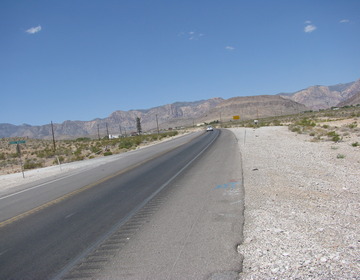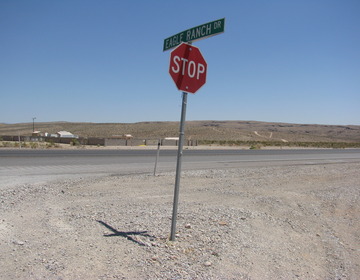Roadside Hazards & Nevada Law

Since the creation of the highway in the 1960s, highway engineers have become increasingly concerned with hazards associated with roadside objects such as steep embankments, trees, and even other cars. With the constant construction here in the Las Vegas Valley, roadside objects are very common. Statistics have revealed that each year about 1/3 of fatal motor vehicle accidents involve a car that has struck a roadside object or rolled over.
Often, hazardous roadside objects are the products of negligence. Many times, construction zones are not properly blocked off, or drivers are not adequately warned of the present dangers in the construction zone. The irresponsible actions of others put motorists at risk of serious injury: contractor or worker negligence can often lead to serious injury or fatality. Injuries sustained from a roadside hazards can range from whiplash to brain damage. Such accidents have serious consequences, and require serious compensation – just to cover medical expenses.
Some of the more common roadside hazards include:
- Highway maintenance: When our highways are not adequately maintained, conditions such as potholes, loose materials, and other roadside hazards can all contribute to serious accidents.
- Road design: If you have been injured in an accident in which there were inadequate signs, poor intersection layout, or insufficient curve grading, road design problems may have played a role in your accident.
Those who design and maintain our roads and highways have the responsibility of ensuring that dangerous street conditions will not put motorists, who exercise reasonable care, in danger. Unavoidably, cars will sometimes skid, slide, be cut off by other vehicles, or run off the side of the roads. Drivers will also inevitably sometimes fall asleep or be distracted and lose control of their vehicles. An indicator of negligence is the failure to take reasonable steps to prevent foreseeable events from turning tragic. Motorists have a right to expect that their government will not allow dangerous roads to cause vehicle accidents. Avoiding hazardous road incidents means ensuring vehicle and pedestrian safety by doing the following:
- Providing recovery zones. If a driver strays from the highway or road, they should be able to get back onto it.
- Providing guardrails. This protects cars from dangerous street hazards such as trees, poles, cliffs, or ravines.
- Avoiding dangerous curves. Curves should be banked in order to keep speeding cars from flying off the road.
- Having adequate signs, warning motorists of dangerous highway or road conditions.
- Installing rumble strips, bumps, or grooves to make drivers aware when they are straying away from their lane.

The most important feature in winning a roadside hazards case is proving that the government or company responsible was aware of a significant highway danger, and failed to fix it. This frequently involves proving that a public employee, working to prevent dangerous roads, over-looked a hazard that, consequently, caused the hazardous conditions. At times, a case is made by showing that the government was aware of a dangerous highway, or road condition, and failed to address the hazard.
Because the conditions at an accident site may change, it is vital that pictures are taken and that an attorney is contacted (in order to understand what defects to look for and how to preserve the evidence). Benson & Bingham Accident Injury Lawyers, LLC is an experienced law firm that will help you get the compensation you deserve. We pride ourselves in client care, and we want to help you! Email or give us a call today: 702-382-9798.
Free Consultation

